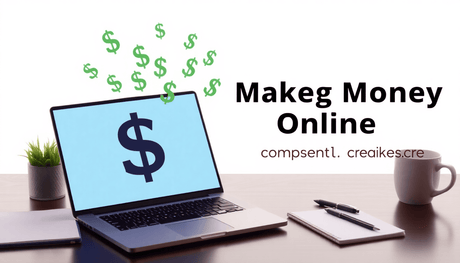PLR courses, or Private Label Rights courses, are educational materials that come with the rights to rebrand, repurpose, and resell them. They play a vital role in education by offering ready-made resources for curriculum development.
Structuring a curriculum using PLR courses provides flexibility, time efficiency, and access to professional-grade content. It allows educators and content creators to customize learning materials to suit their specific needs.
In this article, you will gain insights into understanding PLR courses, identifying the target audience for your curriculum, defining learning objectives, selecting relevant PLR content, customizing and organizing your curriculum effectively using PLR courses, ensuring clear flow and relevance in your curriculum design.
Understanding PLR Courses
Keywords: PLR licenses, Uthena, customization
Talking points:
-
In-depth explanation of Private Label Rights (PLR) courses and how they work.
- PLR licenses grant individuals the right to modify, rebrand, and resell content under their name.
- This flexibility allows for unique customization of educational materials to suit specific needs.
-
Overview of Uthena as a popular platform for sourcing whitelabel courses.
- Uthena offers a diverse range of high-quality PLR video courses for various industries.
- Known for providing ready-made courses that can be tailored to individual preferences.
-
Exploring the level of customizability offered by PLR content to suit individual needs.
- PLR materials often come with editable source files, enabling users to adjust content according to their audience.
- Customization options include adding logos, changing colors, and even altering the course structure.
By understanding the fundamentals of PLR licenses, exploring platforms like Uthena, and recognizing the extensive customization opportunities available, educators can effectively leverage these resources to create engaging and tailored curricula for their target audience.
Identifying the Target Audience for Your Curriculum
Defining your target audience is a critical step when structuring a curriculum with PLR courses. Without clarity on who will engage with your content, it becomes challenging to create a learning experience that resonates and delivers value. The diverse needs of entrepreneurs, educators, and content creators require tailored curriculum elements that address their unique challenges and goals.
Why focus on the target audience?
- Ensures relevance by aligning course topics with learners' interests and professional demands.
- Improves engagement through language, examples, and case studies that connect directly to the audience's context.
- Increases effectiveness by matching teaching styles and delivery methods to learners’ preferences.
Understanding your target audience allows you to craft a more personalized and impactful curriculum.
Tailoring curriculum for distinct groups:
- Entrepreneurs seek actionable strategies, business growth insights, and practical skills that can be applied quickly. They benefit from content emphasizing marketing, sales tactics, and productivity hacks.
- Educators prioritize instructional design, pedagogy, and student engagement techniques. Curriculum for this group should include modules on assessment methods and classroom management.
- Content creators focus on creativity, branding, content marketing, and platform optimization. Materials highlighting storytelling, video production, or social media strategy are highly valuable.
Identifying the target audience guides you in selecting relevant PLR courses and customizing them effectively. This approach transforms generic content into a focused curriculum that meets learners where they are and pushes them forward.
Defining Learning Objectives and Selecting Relevant PLR Content
Setting clear learning objectives is a critical step in structuring a curriculum using PLR courses. These objectives act as a roadmap, helping you define what learners should know or be able to do by the end of the course. Precise goals guide your decisions on which PLR content to include, ensuring each module serves a specific purpose.
Identify Topics and Skills
To begin, outline the necessary topics and skills that align with your audience’s needs. For example, if your target audience includes entrepreneurs, focus on PLR courses covering business strategy, marketing fundamentals, or financial management. Courses such as International Negotiation Skills can be invaluable for mastering global business strategies.
Educators might require courses emphasizing instructional design or classroom technology integration. For instance, a comprehensive Google Apps Script guide could be beneficial for educators looking to integrate technology into their teaching.
Content creators could benefit from modules on digital marketing, video production, or copywriting. Additionally, individuals looking to transition into programming might find value in Python 3 programming courses, which can significantly enhance their skill set.
Review Available PLR Courses
Review the available PLR courses thoroughly to find content that matches these objectives. Evaluate each course for relevance by asking:
- Does it cover essential knowledge areas?
- Are the skills taught practical and applicable?
- Is the content up-to-date and accurate?
Selecting PLR materials that hit these marks ensures your curriculum remains focused and effective. Combining multiple PLR courses can help build a comprehensive learning path that addresses foundational concepts first before advancing to complex topics.
For instance, a course on Conflict Management could serve as a foundational module for leaders, while a subsequent module on self-reinvention could help them embrace change and grow towards success.
This approach not only maximizes the use of high-quality, expert-developed material but also keeps learners engaged through clear progression and well-defined outcomes.
Customizing, Organizing, and Enhancing Engagement in Your Curriculum Using PLR Courses
Adapting PLR content to fit your unique audience is essential. PLR courses come with a strong foundation, but modification ensures the material speaks directly to your learners’ needs and preferences. This process involves not only tweaking language and examples but also adjusting the depth and focus of topics. Maintaining coherence throughout these changes is critical—you want every module or unit to connect logically with what precedes and follows it, preserving a smooth learning journey.
Quality remains a top priority when customizing PLR content. Avoid diluting the original course’s professional standards by introducing inconsistent or unrelated information. Instead, enhance the content by:
- Adding current data or industry trends relevant to your audience’s context.
- Incorporating your own expertise or case studies to personalize lessons.
- Ensuring all multimedia elements (videos, PDFs, quizzes) meet high production values.
Organizing your curriculum into clearly defined modules or units helps learners absorb information progressively. Start with foundational concepts before advancing to more complex skills. This arrangement:
- Builds confidence as learners master basics.
- Creates natural checkpoints for knowledge reinforcement.
- Allows learners to see clear pathways for their skill development.
For example, if your curriculum covers digital marketing, begin with core principles like SEO and email marketing before moving into advanced tactics such as automation or analytics interpretation.
Engagement rises when you embed interactive elements within your curriculum design. Assessments, activities, and supplementary resources transform passive consumption into active participation:
- Assessments provide measurable feedback on learner progress—quizzes at the end of each module help solidify understanding.
- Activities, such as hands-on projects or reflection prompts, encourage practical application of concepts.
- Supplementary resources like cheat sheets, templates, or recommended reading deepen knowledge and offer ongoing value.
PLR courses often include these components ready-made but customizing them to suit your teaching style or audience preferences increases effectiveness. For instance, modifying quiz questions to reflect real-world scenarios your learners face makes assessments more relevant.
Balancing modification with fidelity to original quality guarantees that your curriculum not only meets educational goals but also delivers a professional, engaging experience that keeps learners motivated from start to finish.
Ensuring Clear Flow, Measurable Milestones, and Relevance in Your PLR-Based Curriculum
Establishing a Clear Flow
When structuring your curriculum using PLR courses, it is essential to establish a clear flow that allows for seamless transitions between different topics and concepts. This ensures that learners can easily follow the progression of the course without feeling lost or overwhelmed by disparate information. By creating a logical sequence of modules or units, you can guide students through a coherent learning journey that builds upon their existing knowledge and skills. Incorporating principles from Systems Leadership can further enhance this process by fostering a holistic understanding of the interconnectedness of various subjects.
Measurable Milestones for Progress Tracking
Providing learners with measurable milestones is crucial for progress tracking and assessment purposes. These milestones serve as checkpoints that help students gauge their understanding and development throughout the course. By setting clear objectives and outcomes for each module or section, such as those outlined in these 5 professional SMART goal examples, you enable learners to monitor their progress, identify areas for improvement, and stay motivated to reach their learning goals.
Leveraging Expert-Developed Content
Leveraging expert-developed content from PLR materials can significantly enhance the efficiency of your curriculum design. For instance, incorporating high-quality resources such as a PLR Video Course on stepping out of your comfort zone created by industry professionals can save time on content creation while ensuring the relevance and credibility of the information presented to your students. Additionally, utilizing resources like a Metaverse Master Class can provide valuable insights into emerging trends that align with your specific educational objectives and target audience's needs.
Incorporating these strategies into your PLR-based curriculum design will not only improve the overall learning experience for your students but also contribute to the long-term success and sustainability of your educational programs. It's important to remember that employee learning outlasts employee training, emphasizing the need for continuous learning and adaptation in our educational approaches.
Conclusion
Structuring a curriculum using PLR courses offers a valuable opportunity to develop comprehensive training programs that meet the specific needs of your target audience. By customizing content, setting clear objectives, and ensuring a smooth flow of information, you can create engaging learning experiences that drive knowledge acquisition and skill development effectively.
Embrace the flexibility and quality of PLR materials to design engaging curricula tailored to diverse learning needs. Through thoughtful selection and strategic organization, you can provide learners with a rich educational experience that fosters growth and success.
FAQs (Frequently Asked Questions)
What are PLR courses and how are they relevant in education?
PLR courses, or Private Label Rights courses, are pre-made educational materials that can be customized and used by educators, entrepreneurs, and content creators. They are relevant in education as they provide a cost-effective and time-efficient way to develop comprehensive training programs tailored to diverse learning needs.
How does Uthena facilitate sourcing of PLR courses for curriculum development?
Uthena is a popular platform that offers a wide range of whitelabel PLR courses. It provides educators and entrepreneurs access to expert-developed content which can be customized and structured into coherent curricula, making it easier to create high-quality educational materials without starting from scratch.
Why is identifying the target audience important when structuring a curriculum with PLR courses?
Defining your target audience—whether entrepreneurs, educators, or content creators—is crucial because it allows you to tailor curriculum elements to meet their specific needs and preferences. This ensures the curriculum is relevant, engaging, and effective in achieving desired learning outcomes.
How should learning objectives guide the selection of PLR content for a curriculum?
Setting clear learning objectives helps in reviewing available PLR courses to align with your curriculum goals. By identifying necessary topics and skills within the chosen PLR content, you can select materials that directly support the intended educational outcomes, ensuring focused and purposeful learning experiences.
What strategies can be used to customize and organize PLR content for better learner engagement?
To enhance engagement, modify PLR content to align with your target audience while maintaining quality and coherence. Structure the curriculum into modules or units progressing from foundational to advanced topics. Incorporate assessments, activities, and supplementary resources to foster active learning and understanding.
How can you ensure clear flow and measurable milestones in a PLR-based curriculum?
Establish a logical flow that facilitates smooth transitions between topics and concepts. Provide learners with measurable milestones for progress tracking and assessment throughout the course journey. Additionally, regularly review and adapt expert-developed PLR materials to maintain relevance and uphold quality standards over time.









